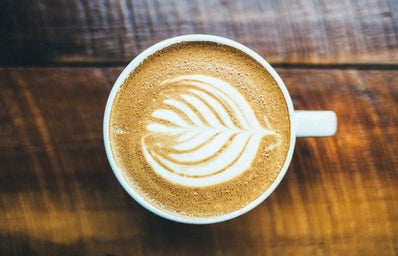For most college students, coffee is a major source of sustenance. But one look at a Starbucks menu will show that coffee is a beverage that’s far from simple and the options can be quite overwhelming. To help you work through the basics, here is your guide to coffee.
1. Coffee Brewing Methods
Chemex Coffee Maker is similar to the pour-over method but uses a specialty filter to produce a higher quality cup of coffee. Pour boiling water into the Chemex and swirl it around to heat the glass. Remove the water and place coffee grounds in the filter, then refill with water. Wait for the drip to finish to get your cup of coffee.
Pros: Creates a non-acidic cup of coffee.
Cons: Time-consuming and expensive.
Courtesy: Chemex
Cold Brew Coffee produces a less acidic drink, as the grounds never come into contact with hot water. Grounds are soaked over an extended period of time (typically a 12-hour minimum) in cold or room temperature water and then strained of its grounds.
Pros: Smooth taste and easy to make.
Cons: Must be done in advance.
Coffee Maker is the simplest of machines for brewing coffee (besides the college student’s beloved Keurig) and the most common brewing method. Just add water to the machine, measure your grounds and place in the disposable filter. The machine does the rest.
Pros: Convenient and simple.
Cons: Subpar coffee.
Drip Brewing (also known as pour-over) is a method that involves placing a filter over your cup in which the coffee grounds sit, and letting hot water seep through.
Pros: Easy clean up.
Cons: Makes only one cup of coffee at a time.
French Pressed Coffee (actually designed by an Italian) is a coffee plunger apparatus that lets coffee beans soak in hot water before straining the coffee after roughly four minutes.
Pros: Fast and easy.
Cons: Some experts say it does not give you a refined taste and it requires more clean up.
2. Coffee Drinks
Cappuccino is a drink that combines espresso, warm milk and milk foam. The foam layer acts as insulation to keep the drink warmer for a longer period of time.
Chai Latte is a latte that replaces the espresso with tea. Dirty Chai is a drink that adds both the tea and a shot of espresso.
Flat White originates from Australia and uses a very refined layer of foam poured over a shot of espresso.
Courtesy: Starbucks
Latte is a ratio of espresso-to-steamed milk, before adding a small amount of foam.
Macchiato can be translated as “stained” or “marked” and it is espresso with a spot of foamed milk that produces an extremely strong-tasting drink.
Mocha is a drink that also consists of espresso and warmed milk, but adds a chocolate flavoring through cocoa powder or syrup to make a sweeter-tasting drink.
3. Roasts
Courtesy: Margra
Light Roast is beans heated at a low temperature, creating a lighter-bodied but more acidic taste. It has the highest level of caffeine and is your ideal coffee bean if you want to taste the origin of the bean.
Medium Roast is roasted at medium heat and produces a sweeter-tasting bean as the natural sugars are given a chance to caramelize.
Dark Roast is heated at the highest temperatures, which means the beans’ original flavors are often masked by flavors gained through the roasting process. This roast contains the lowest level of caffeine and has the lowest acidic levels.


